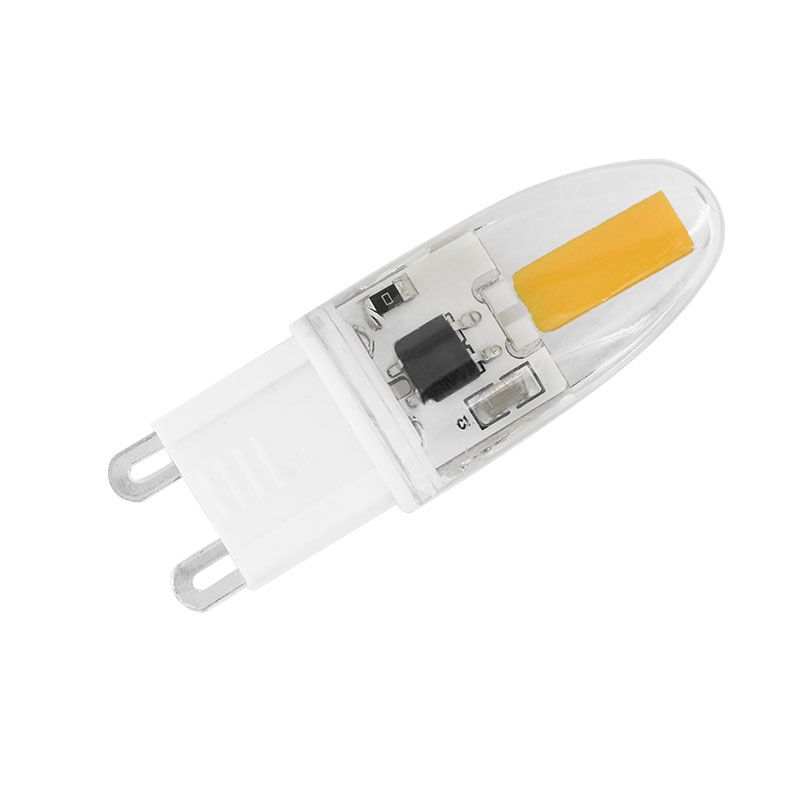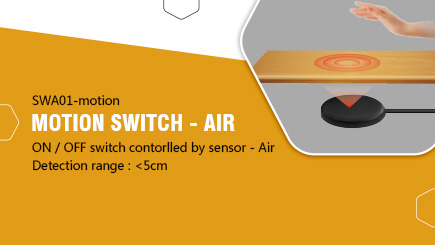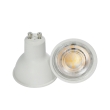What are the characteristics of the perfect LED underwater lunar lamp?
2017-05-26 10:52:54
Is color important? This is a serious problem, fishing lovers and fishermen have long been looking for their secrets. Some anglers and fishermen think that the choice of color is crucial, while others say it does not matter. Scientifically, there is evidence that both views may be correct. There is ample evidence that in the case of suitable environmental conditions, the choice of the right color or the opportunity to attract fish, but science can also show that in other cases, the value of color is limited, and not as important as imagined.
The fish was born more than 450 million years and was a very good creature. For thousands of years, they have made many superb adaptability adjustments in the marine environment. Living in the water world is not easy, there is a high degree of environmental opportunities and serious challenges. For example, the sound is 5 times faster in the water than in the air, and the water is much better. The ocean is actually a very noisy place. By using good auditory perception, using their inner and lateral lines to detect prey or avoid enemies, the fish can take advantage of this. The water also contains unique compounds that use them to identify other members of their species, discover food during the breeding season, detect predators and perform other functions. The fish has formed a remarkable sense of smell and is considered a million times better than humans.
However, water for fish and fishermen, for the visual and color is a serious challenge. Many of the features of light vary rapidly with water flow and depth.
What does light attenuation bring?
The light seen by humans is only a small part of the total electromagnetic radiation received from the sun, that is, we see the so-called visible spectrum. The actual color in the visible spectrum is determined by the wavelength of light: longer wavelengths are red and orange; shorter wavelengths are green, blue and purple. However, many fish can see the colors we do not have, including UV rays. The distance that UV rays pass in the water is much more distant than most of us.
When the LED light into the waters, the intensity of the rapid decline in color changes. These changes are called attenuation. Decay is the result of two processes: scattering and absorption. The scattering of light is caused by the particles suspended in the water or other small objects - the more particles, the more scattering. The scattering of light in water is somewhat similar to the effect of smoke or fog in the atmosphere. Due to the river input, coastal water bodies usually have more suspended matter, stir up material from the bottom and increase plankton. Due to this larger amount of suspended matter, light usually penetrates into smaller depths. In relatively clear coastal waters, the light penetrates deeper into the depth.
Light absorption is caused by several substances, such as light is converted into heat or for chemical reactions such as photosynthesis. The most important aspect of fishing is the effect of water itself on the absorption of light. For different wavelengths of light, the amount of absorption is different; in other words, the various colors are absorbed differently. Longer wavelengths, such as red and orange, are quickly absorbed and penetrated into relatively short blue and purple wavelengths much shallow depth.
Absorption also limits the distance of light entering the waters. Approximately three meters (about 10 feet), about 60% of the total light (sunshine or moonlight), almost all of the red light will be absorbed. At about 10 meters (about 33 feet), about 85% of the total light and all the red, orange and yellow rays have been absorbed. This will seriously affect the effect of angler bait. At the depth of three meters, the red becomes ice showing gray, and as the depth increases, it will eventually turn black. As the depth increases, when all the other colors are absorbed, the dimmed light now becomes blue and eventually darkens.
The absorption or filtering of the color also works in the horizontal direction. So again, a distance from the fish only a few feet of red flight seems gray. Likewise, other colors also vary with distance. For the color to be seen, it must be hit by the same color of light and then reflected in the direction of the fish. If the water has been attenuated or filtered out) a color, the color will be displayed in gray or black. And because the UV line penetration depth, in the ultraviolet radiation generated under the fluorescence, is a rich underwater environment and an important part.
What is the best color of light to attract fish?
Scientists really do not know what fish to see, in other words, what images reach their brains. Most studies of fish vision are done by physical or chemical examinations of different parts of the eye, or by determining how fish in the laboratory responds to various images or stimuli. By different species may have different visual abilities and laboratory results may not represent what is happening in the real world of oceans, lakes or rivers, it is not scientific to make a high degree of consistency and definite conclusion about the visual capacity of the fish.
Physical studies of the eyes and retina show that most people can obtain clear focus images, detect motion, and have good contrast detection capabilities. And sufficient experiments have shown that the minimum level of light is required before the fish can recognize the color. With the deepening of research, different fish like a particular color.
Most fish have enough vision, but sound and smell play a more important role in the availability of food or natural enemies. Fish usually use their hearing or smell to preliminarily perceive their prey or predators, and then use their vision in the final attack or escape. Some fish can see objects in distance. Tuna and other fish vision is particularly good; but under normal circumstances. Fish is myopia, although the shark's vision is excellent.
Studies have shown that fluorescent colors are longer and more visible than conventional colors, and bait with fluorescent material is usually more attractive to fish (increasing contrast and transmission distance). More precisely, the fluorescent color having a wavelength slightly longer than the color of the water has better long-range visibility.
Some members of the fish and their food chains have color receptors in their eyes, optimized for their "space" rays. It can be seen that a single spatial color of the eye can detect changes in light intensity. This is equivalent to a black, white and gray shade of the world. At this simplest level of visual information processing, animals can recognize that something is spatially different, that is, where there is food or predator. Most animals living in the lighting world have additional visual resources: color vision. By definition, this requires that they have color receptors containing at least two different visual pigments. In order to effectively perform this function in water irradiated with light, the aquatic animal will have a visual pigment that is sensitive to the background & quot; spatial & quot; color and one or more visual colors that deviate from the blue-green region, for example in the red or ultraviolet region of the spectrum The This provides a clear survival advantage for these animals because they not only detect changes in light intensity, but also detect color contrast.
For example, many fish have two color receptors, one in the blue region of the spectrum (425-490 nm) and the other in the near ultraviolet (320-380 nm). Insects and shrimp, members of the fish food chain, with blue, green (530 nm) and near ultraviolet receptors. In fact, some aquatic animals have as many as ten different types of visual pigments in their eyes. In contrast, humans have the highest sensitivity in blue (442nm), green (543nm) and yellow (570nm).
Why some fish can feel polarized light?
Recent studies have shown that many fish are polarized by polarized light. Human beings do not have the ability to separate polarizations from normal light. Conventional light vibrates in all directions perpendicular to its direction of travel; however, the polarized light vibrates in only one plane. When the light is reflected by many nonmetallic surfaces (including the oceanic surface), it is polarized to some extent. This explains how polarized sunglasses work: they block the horizontal reflections from the ocean surface, which leads to much glare but allows the vertically reflective components to pass through.

Do not fully understand why some fish can feel polarized light, and the ability to detect polarized light may be related to the fact that when light is reflected by a surface, it is polarized like a scale on a bait fish. The fish that can detect polarized light have an advantage in finding food. Polarized vision can also enhance the contrast between the almost transparent prey and the background, making the prey easier to see. Another conjecture is that polarized vision can make fish look far away from the object - is usually three times the visual distance, and without the ability of the fish, you need more bright light.
Why is the light stick especially popular with fishermen?
The color of the fluorescent lamp, especially the light stick, is very popular with fishermen. Throw the light stick into the water, even if only to see if there are fish in the area. Under the correct conditions, the visibility of the fluorescent color underwater is very high. Fluorescence is generated when exposed to light radiation with a shorter wavelength. For example, when exposed to ultraviolet, blue, or green light, the fluorescent yellow is shown in bright yellow.
Fluorescence color fluorescence is mainly due to ultraviolet (UV) light, which is the color we are not visible. Humans can not see the ultraviolet light, but we can see how it emits some of the color of the fluorescence. Ultraviolet light in the cloudy or gray day special advantages, when the UV light fluorescent material, the color becomes particularly evident and full of vitality. In the sunny days, the fluorescent effect is much smaller, of course, if there is no light, there will be no fluorescence.
Scientific research shows that all members of this food chain are sensitive to blue and green colors. This may be due to the fact that water absorbs longer wavelengths (Mobley 1994; Hou, 2013). The color of the water body depends largely on the internal composition, combined with the light absorption spectrum in the water. The dissolved organic matter in the water will soon absorb blue light, then turn green, then turn yellow (exponentially decay to wavelength), so that the water is tan. Keep in mind that the light in the window is very narrow and the red light is absorbed soon.
For a long time, we understand that light can attract fish, shrimp and insects at night. But what is the best color of light to attract fish? Based on the biology of the visual receptors described above, the light should be blue or green. However, although blue or green is desirable, it is not necessary. Even if the eyes of a member of the fish or its food chain have the most sensitive color receptors for blue or green, these same receptors are less susceptible to other color sensitivities. So, if a fishing light source is strong enough, other colors will attract fish. For example, LEDs with warm white temperatures will attract fish - if strong enough. But no doubt, warm white LED lamp energy consumption is quite high.
It can be seen that the perfect LED underwater lunar lamp has the following characteristics: 1) high strength, 2) emits light in a color similar to fish space (blue or green), 3) powered by portable power supply, 4) The ease of operation and stability 5) the use of polarized optical materials and fluorescent materials 6) odor, sound, spectrum and mobile light graphics intelligent control and integration.





